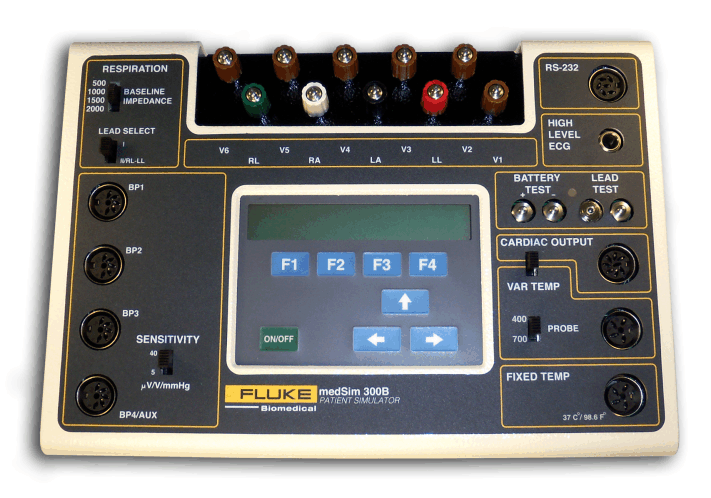SBAU171D May 2010 – January 2016 ADS1198 , ADS1298
-
ADS1298ECG-FE/ADS1198ECG-FE
- Trademarks
- 1 ADS1298ECG-FE/ADS1198ECG-FE Overview
- 2 Quick Start
- 3
Using the ADS1298ECG-FE Software
- 3.1 Application User Menu
- 3.2 Top-Level Application Controls
- 3.3 About Tab
- 3.4 ADC Register Tab
- 3.5 Analysis Tab
- 3.6 Save Tab
- 4 ADS1x98ECG-FE Input Signals
- 5 ADS1298ECG-FE/ADS1198ECG-FE Hardware Details
- ASchematics, BOM, Layout, and ECG Cable Details
- BExternal Optional Hardware
- CSoftware Installation
5.7.1 Patient Simulator Input
The output from any typical patient simulator can be directly fed into the DB15 connector (J1). For all measurements in this user guide, a Fluke medSim 300B simulator was used as the ECG signal source (Figure 37) . The simulator is capable of generating ECG signals down to 50µV of amplitude. Particular attention must be given to the common-mode value of the input signal for proper data capture. Refer to the ADS1298 product data sheet or ADS1198 product data sheet for the common-mode range for various programmable gain amplifier (PGA) gain settings. Section 4.4.1 explains the process used to capture 12-lead ECG data.
 Figure 37. Fluke Simulator Configuration
Figure 37. Fluke Simulator Configuration